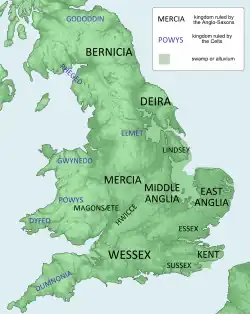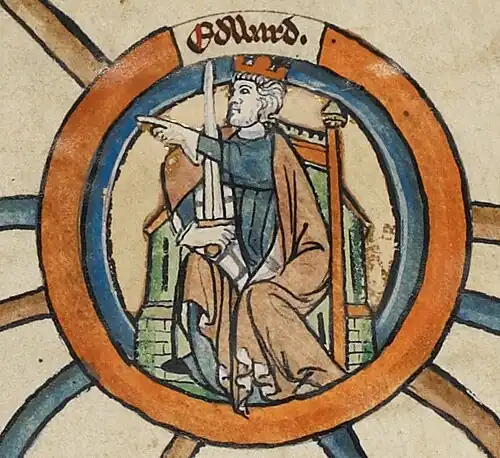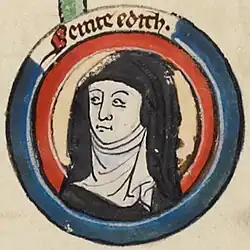Portal:Anglo-Saxon England
Anglo-Saxon England
Anglo-Saxon England or early medieval England covers the period from the end of Roman imperial rule in Britain in the 5th century until the Norman Conquest in 1066. Compared to modern England, the territory of the Anglo-Saxons stretched north to present day Lothian in southeastern Scotland, whereas it did not initially include western areas of England such as Cornwall, Herefordshire, Shropshire, Cheshire, Lancashire, and Cumbria. The 5th and 6th centuries involved the collapse of economic networks and political structures and also saw a radical change to a new Anglo-Saxon language and culture. This change was driven by movements of peoples as well as changes which were happening in both northern Gaul and the North Sea coast of what is now Germany and the Netherlands. The Anglo-Saxon language, also known as Old English, was a close relative of languages spoken in the latter regions, and genetic studies have confirmed that there was significant migration to Britain from there before the end of the Roman period. Surviving written accounts suggest that Britain was divided into small "tyrannies" which initially took their bearings to some extent from Roman norms. By the late 6th century England was dominated by small kingdoms ruled by dynasties who were pagan and which identified themselves as having differing continental ancestries. A smaller number of kingdoms maintained a British and Christian identity, but by this time they were restricted to the west of Britain. The most important Anglo-Saxon kingdoms in the 5th and 6th centuries are conventionally called a Heptarchy, meaning a group of seven kingdoms, although the number of kingdoms varied over time. The most powerful included Northumbria, Mercia, East Anglia, Essex, Kent, Sussex, and Wessex. During the 7th century the Anglo-Saxon kingdoms were converted to Christianity by missionaries from Ireland and the continent. In the 8th century, Vikings began raiding England, and by the second half of the 9th century Scandinavians began to settle in eastern England. Opposing the Vikings from the south, the royal family of Wessex gradually became dominant, and in 927 King Æthelstan I was the first king to rule a single united Kingdom of England. After his death however, the Danish settlers and other Anglo-Saxon kingdoms reasserted themselves. Wessex agreed to pay the so-called Danegeld to the Danes, and in 1017 England became part of the North Sea Empire of King Cnut, a personal union between England, Denmark and Norway. After Cnut's death in 1035, England was ruled first by his son Harthacnut and succeeded by his English half-brother Edward the Confessor. Edward had been forced to live in exile, and when he died in 1066, one of the claimants to the throne was William, the Duke of Normandy. William's 1066 invasion of England ended the Anglo-Saxon period. The Normans persecuted the Anglo-Saxons and overthrew their ruling class to substitute their own leaders to oversee and rule England. However, Anglo-Saxon identity survived beyond the Norman Conquest, came to be known as Englishry under Norman rule, and through social and cultural integration with Romano-British Celts, Danes and Normans became the modern English people. (Full article...) Selected articleThe Liber Eliensis (sometimes Historia Eliensis or Book of Ely) is a 12th-century English chronicle and history, written in Latin. Composed in three books, it was written at Ely Abbey on the island of Ely in the fenlands of eastern Cambridgeshire. Ely Abbey became the cathedral of a newly formed bishopric in 1109. Traditionally the author of the anonymous work has been given as Richard or Thomas, two monks at Ely, one of whom, Richard, has been identified with an official of the monastery, but some historians hold that neither Richard nor Thomas was the author. The Liber covers the period from the founding of the abbey in 673 until the middle of the 12th century, building on a number of earlier historical works. It incorporates documents and stories of saints' lives and is a typical example of a kind of local history produced during the latter part of the 12th century, similar to a number of books written at other English monasteries. The longest of the contemporary local histories, it describes the devastation caused by the disorders during the reign of King Stephen as well an account of the career of Nigel, the Bishop of Ely from 1133 to 1169, and his disputes with King Stephen. Other themes are the miracles worked by the monastery's patron saint, Æthelthryth, and the gifts of land to Ely. The two surviving complete manuscripts of the work are complemented by a number of partial manuscripts. A printed version of the Latin text appeared in 1963 and an English translation was published in 2005, although extracts had appeared in print earlier. The Liber Eliensis is an important source of historical information for the region and period it covers, and particularly for the abbey and bishopric of Ely. (more...) Did you know?
Subcategories
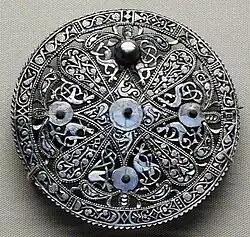 Anglo-Saxon England 5th century in England 6th century in England 7th century in England 8th century in England 9th century in England 10th century in England 11th century in England Anglo-Saxon literature Anglo-Saxon archaeology Anglo-Saxon art Christianity in Anglo-Saxon England Conflict in Anglo-Saxon England Fiction set in Anglo-Saxon England Hen Ogledd Anglo-Saxon historiography Anglo-Saxon kingdoms Anglo-Norse England Old English Anglo-Saxon paganism Anglo-Saxon people Peoples of Anglo-Saxon England Anglo-Saxon settlements Anglo-Saxon society Selected image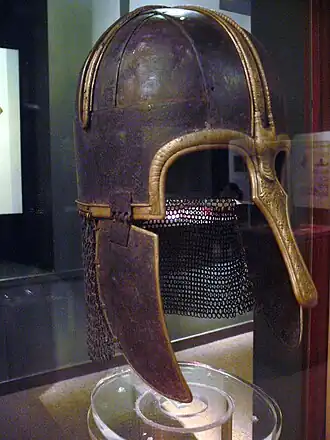 The 8th century Anglo-Saxon Coppergate Helmet Selected biography
Saint Edith of Wilton (also known as Eadgyth, her name in Old English, or as Editha or Ediva, the Latin forms of her name) was an English nun, a daughter of the 10th century King Edgar of England, born at Kemsing, Kent, in 961. Following her death in 984, she became the patron saint of her community at Wilton Abbey and churches were dedicated to her in Wiltshire and in other parts of England. Her life was written by Goscelin, and her feast day is on 16 September. (more...) Things you can do
Featured articles and lists
Related portalsWikiProjects
Associated WikimediaThe following Wikimedia Foundation sister projects provide more on this subject:
| |||||||||||||||||||
